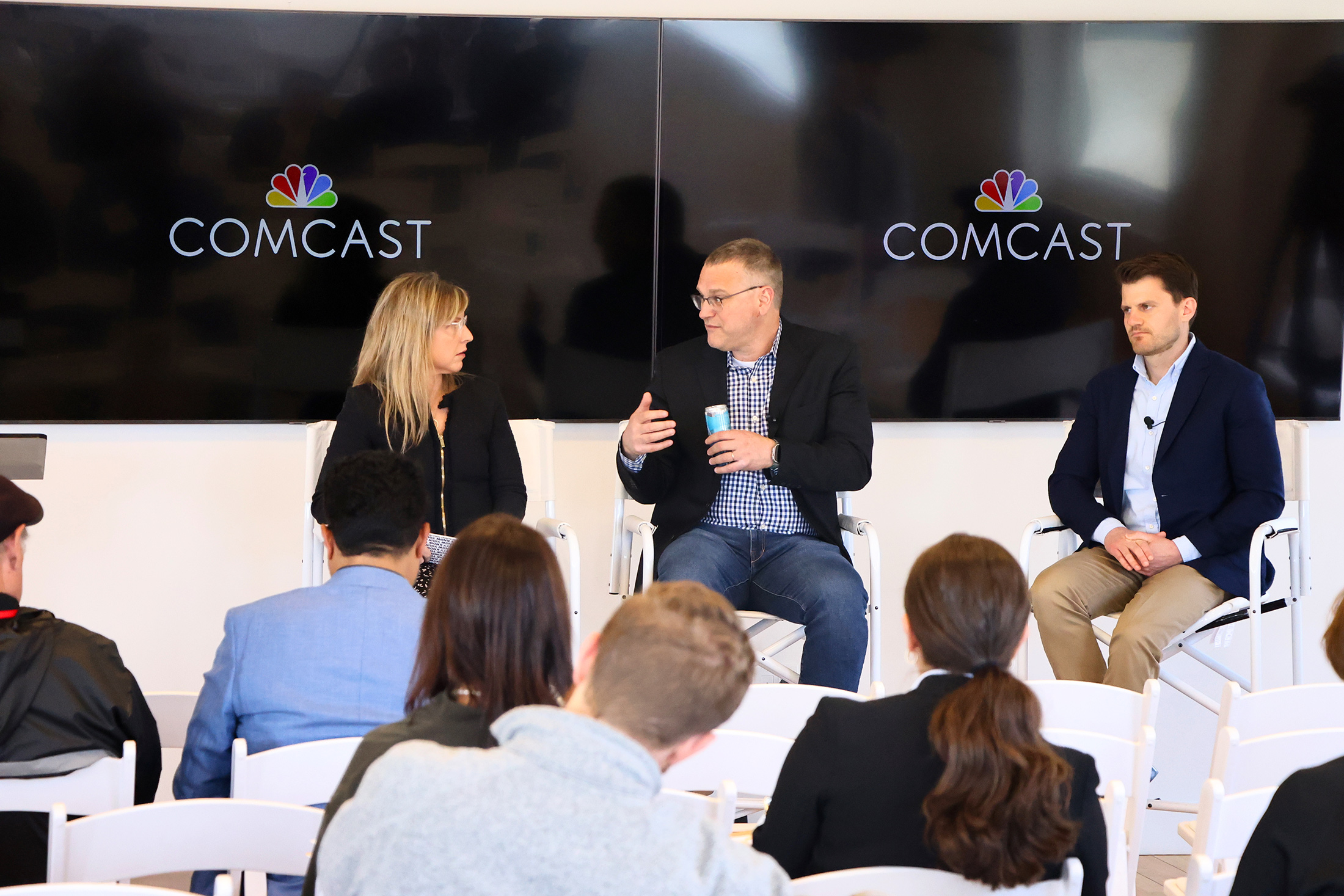On Tuesday, April 18th, Pier 9’s historic Klamath ferryboat in San Francisco served as the venue for a timely conversation focused on Comcast’s new advanced network, which includes super-fast upload and download speeds, increased reliability and lower latency.
Moderated by The Standard’s editor-in-chief Julie Makinen, the panel featured Elad Nafshi, chief network officer for Comcast, and Jeff Bellisario, executive director for the Bay Area Council’s Economic Institute. Together, the trio discussed the importance and practicalities behind getting people up to speed in a world of rapidly increasing network demand.
The latest step toward this goal? Comcast’s new Xfinity 10G network. Not to be confused with the cellular technology known as 5G, 10G is a wholly separate innovation.
As a relatively small, technologically savvy crowd listened on, Nafshi detailed the ways in which Comcast is redefining the standard with its next-generation high broadband network.
Features of Comcast’s Xfinity 10G network include faster speeds and less latency—all delivered without having to extend fiber cables into individual homes and apartments. Instead, the existing coax cable serves as the hub.
“Crucially,” Nafshi noted, “[Comcast] will be able to do that across the entire footprint, without digging up your sidewalks, without tearing up your front lawns, without needing to spend eight hours at home [with a technician] waiting for them to rewire.”
As the person responsible for driving strategy for the nation’s largest gigabit internet network, Nafshi is always looking for ways to improve Comcast’s reliability, scalability and development operations. Having been with the company since 2005, Nafshi has spearheaded numerous successful innovations at Comcast, all ultimately geared toward closing the digital divide by advancing digital equity in the most robust manner possible.
Speaking of footprints, Comcast’s plans for 10G are unfolding on a national scale. At present, the company is ahead of schedule on its goals to deploy network improvements to over 40 markets, including San Francisco. Ultimately, Comcast intends to have Xfinity’s 10G network in more than 50 million homes and businesses by 2025.
At one point, the panelists brought up a recent 2023 Silicon Valley Index Report press release, which found that 35% of people in Silicon Valley now work from home most days of the week. That’s up from 5% total in 2019, suggesting an urgent need to adopt better infrastructure to ensure a rapidly hybridizing workforce isn’t left buffering—or worse, left behind altogether.
Tuesday’s event also saw a discussion of Comcast’s new “Storm Ready” Wi-Fi.
Conceived as an improved way to keep people connected when it matters most, this tech takes the form of a new form of modem that’s equipped with cellular and battery backups in the event of a power outage. As the panelists discussed, Comcast’s “Storm Ready” Wi-Fi is sure to be of particular interest to Californians dealing with issues of energy efficiency, sustainability and frequent fluctuations in power grid availability.
Also of note is a general disconnect with users when it comes to estimating their data use.
When Makinen took a survey of the crowd, the majority in attendance confessed that they were wholly unaware of their monthly data usage figure. According to Nafshi, average household usage is presently in the neighborhood of 580GB per month. That’s 58 times what it was in 2010, reinforcing just how dramatically demand has increased in recent years.
By the time the afternoon had drawn to a close, the appeal of Comcast’s new network was abundantly clear to all in attendance, from its potential as a tool in alleviating pressing local concerns (including public safety, homelessness and housing), to its everyday usefulness (like ensuring a family can simultaneously and seamlessly make full use of their service across multiple devices).
As we enter a period some are predicting will equate to a fourth Industrial Revolution—one potentially powered by 10G—everyone from entrepreneurs to students will need stronger, more reliable online access.
That’s why Comcast remains steadfast in its pledge to connect millions of homes and businesses to its next-generation network infrastructure. Because ultimately, be it for boardroom meetings or family movie nights, the goal is to keep people connected wherever and anytime they need it.

